March 29, 2025
- hfalk3
- Mar 30
- 7 min read
Kyriad Résidence Casablanca Centre-ville, Casablanca > Menzeh Zalagh, Fez
Today is probably going to be one of those long days. It isn’t our longest day on this tour but we will travel 300 km. Breakfast is the first stop today. It is here at the hotel, which really isn’t anything special, but the motor coach leaves at 08:00 and the next stop is Rabat. Lunch will probably be there but not until well after noon.
It is still Ramadan so most places will be closed until sunset, which limits not only where we can get something to eat or drink but when. The tour left on time, actually about five minutes early. That is a good start for the whole tour and for today.
Our first stop is the Official Royal Place in Rabat. Google maps says that is about 170 km from the hotel and that is should take two and a half hours. We are riding along the highway which follow the Atlantic Coast line of western Morocco. Every once in a while we can see the ocean.
Royal Palace
It is green here along the coast. It takes quite a while to leave what looks like city. The houses and business thin out after about an hour, but we get into more industrial area, before entering farmland. The fields are, for the most part, freshly plowed. It is spring and there are some flowering tress along the way which the guide points out are plums.
Aziz tells us a little bout the economy of Morocco along the way. The main exports are phosphates and textiles, but the also export electric components, inorganic chemicals, transistors, citrus fruits, vegetables and fish. Morocco’s main export partners are Spain, France and Italy.
Moroccos is a major exporter of tomatoes, ranking it s the fourth-largest in the world. They are also a leading supplier of citrus fruits exporting about three million tons a year. Europeans like their raspberries, blackberries and blueberries and Morocco is able to supply those year around. Grapes, olives, sugar, zucchini and different varieties of beans are supplied year around as well.
In 2019, the lastest statistic, Morocco was third worldwide in olive production. Behind Spain (#1) and Italy (#2) with nearly 2 million tons. Italy’s production is just slightly over 2 million tons. They are seventh in worldwide olive oil production.
Morocco clearly has the infrastructure to handle global trade. The port in Casablanca looked very large. The highway between Rabat and Casablanca is beautiful, multi-lane in each direction, divided down the middle by palm trees in a lot of the route. They have a train system; as we can see tracks and signs pointing the way to train stations.
The Royal Palace or Dar al-Makhzen (Arabic: دار المخزن, lit. 'House of the Makhzen’) is the primary and official residence of the king of Morocco in Rabat. It is situated in the commune of Touarga. Its official name is El Mechouar Essaid, lit. 'Venue of Happiness'. Although it is the official residence the current King, Mohammed VI, maintains a residence across the river (Oued Bou Regreg) in Salé. He apparently didn’t have a happy childhood and wanted his children, of which he has two, to have a better childhood.
The 'Alawi’ sultans and kings have maintained a palace in Rabat since the 18th-century reign of sultan Mohammed ben Abdallah, who used Rabat as one of his imperial residences and renovated royal palaces in other cities. The current building was built in 1864 by Mohammed IV to replace the older palace.
When most of Morocco came under French control in 1912, the colonial administration wanted the sultan to be largely stationed in one place, near their administrative headquarters, to show his acceptance of the new regime. Although kings had many residences at their disposal when independence was declared in 1955, they chose to keep the Dar al-Makhzen palace as the main palace of the monarch.
Some monarchs, particularly Mohammed V, preferred the smaller and relatively secluded palace of Dar-es-Salaam, further out of the center of the city, maintaining the Dar al-Makhzen as their official and administrative residence.
Several important events in the lives of several Moroccan royals have taken place in the palace, including the birth of Hassan II in 1929 and the marriage ceremony of Mohammed VI and Salma Bennani in 2002.
The palace sits at the end of the mechouar, a large parade ground also containing a small mosque. The mechouar is used for large public assemblies, such as the return from exile of Mohammed V in 1955.
As well as living space for the king and the royal family, there is accommodation for the Moroccan Royal Guard. The palace complex also contains the Collège Royal, a school for senior members of the royal family, a cookery school, and a ground floor library built to contain the manuscript collection of Hassan II.
There are extensive gardens and grounds surrounding the palace, the design of which was influenced by French formality, traditional Arabic motifs and local horticulture. We left the beautiful gardens and palace and drove the Chellah.
It was a short ride from the palace to the UNESCO World Heritage Site of Chellah or Shella is a medieval fortified Muslim necropolis and ancient archeological site located on the south (left) side of the Bou Regreg estuary. The earliest evidence of the site's occupation suggests that the Phoenicians established a trading emporium here in the first millennium BC. Archeological excavations in of the 20th century unearthed the site of the Roman Colony of Sala Colonia.
14th Century Gate, one of the many pathways through the garden, looking out over the garden. Before you get to the next gate are the Roman ruins.
One of the many storks who live on the roof tops. A better shot of the Roman Ruins, Plot map of Chella, and a view from the front gate towards the 12th century city walls.
In the late 13th century, the site began to be used as a dynastic necropolis for the Marinid dynasty. By the mid-14th century Marinid sultans had enclosed a part of the site with a new set of walls and built a religious complex inside it to accompany their mausoleums. In the 15th century the necropolis began to decline, and it suffered damage over the centuries due to earthquakes and looting.
It was quite a walk through the gardens. A rather steep decline from were the motor coach dropped us off, down to the archeological site and the Roman City. The whole thing is surrounded by a 14th century wall. Really quite beautiful.
Our next stop was the Hassan Tower and Mausoleum of Mohammed V. The Hassan Tower is the minaret of an uncompleted mosque. It was commissioned by Abu Yusuf Yaqub al-Mansur, the third caliph of the Almohad Caliphate, near the end of the 12th century. The tower was intended to be the largest minaret in the world, and the mosque, if completed, would have been the largest in the western Muslim world. When al-Mansur died in 1199, construction on the mosque stopped. The minaret was left standing at a height of 44 meters. The rest of the mosque was also left incomplete, with only the beginnings of several walls and 348 columns being constructed. The tower, along with the remains of the mosque and the modern Mausoleum of Mohammed V, is all that remains.
Mausoleum, horse guard, the pullers where the mosque should be with the tower in the background. Inside the mausoleum and the ceiling of the mausoleum and a view back towards the Atlantic Ocean front he mausoleum.
The mausoleum of Mohammad V is really quite beautiful. The whole site is impressively large and had great views of the river and Atlantic Ocean. They also have beautifully dressed Royal Guards both standing and on horse back. General George Patton once said Morocco had the most beautiful uniforms.
From here we drove to the Kasbah des Oudayas. Now Kasbah, at least for movie fans from the 50’s and 60’s, is usually associated with pirates and thieves. Well, that is somewhat correct. Kasbah actually means citadel, or walled fortress. Which it does in this case. It is located on a hill at the mouth of the Bou Regreg, where it meets the Atlantic Ocean, opposite the city of Salé. It is adjacent to the Medina quarter of Rabat. Medina simply means walled or fortified town. The Kasbah is listed, along with other sites in Rabat, as a UNESCO World Heritage Site.
The walls of the Kasbah, the gate, and a view of the streets.
Views from the ramparts over the river and out to the Atlantic Ocean.
We exited the motor coach and walked through the Kasbah. It was all the ear marks of an ancient walled city. Windy streets, two and three story buildings. A square every once in a while. It has specular views of the ocean, Bou Regreg and Salé from the ramparts.
Afterwards we boarded the bus and headed down the hill to a café on the banks of the river (Bou Regreg); named Barca Blanco. Here was had our lunch. Mary ordered a chicken Caesar salad but was sadly disappointed. It not only had chicken but also fish for some reason. The flavor just wasn’t there.
I ordered a dished called Pastilla au Poulet. Chicken pastilla is traditional Moroccan dish made with eggs and almonds, with filo pastry, saffron, cinnamon, parsley, and butter. The woman we were sharing the table with said it was a good choice. Once we confirmed it had no raisins in it I confirmed the order. It was very good. All the ingredients in inside the pastry and the pastry was covered in powdered sugar and cinnamon. More a dessert than a main dish but well worth it.
My pastilla au poulet
After lunch we drive across the “new” bridge across the river. On the Salé side of the river there is a lot of construction. Money brought in from the UAE and others. Aziz seemed to think they were building a mini Abu Dhabi. There is at least one Abu Dhabi ugly ultra modern phallic symbol shaped building. Aziz wasn’t particularly happy with the development here, but apparently King Mohammad VI wants to attract more development to Morocco. The King wins.
We then drove 170 km to our hotel in Fez. Now is it Fez or Fes? Well it seems both work depending on who is doing the translation from Arabic. Fes is often referred to as Morocco’s cultural capital. It’s primarily known for its Fes El Bali walled medina, with medieval Marinid architecture, vibrant souks and old-world atmosphere. The medina is home to religious schools such as the 14th-century Bou Inania and Al Attarine, both decorated with elaborate cedar carvings and ornate tile work. Our five-hour tour of the Medina will begin tomorrow morning at 08:30.
We get to the hotel just after it had gone 19:00. Dinner was provided to night here at the hotel at 19:30. We checked into our room, very nice and large. Put our luggage down and headed down to dinner. The dinner was a buffet style meal. Nothing very interesting. Some roasted chicken, beans and rice. There were a number of olive dishes and various salads, but nothing meaningful in the way of vegetables.
After dinner we came upstairs and rested for a while before heading off to sleep.
Buonanotte e Ciao, Enrico e Maria




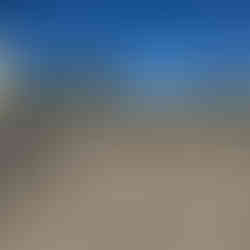

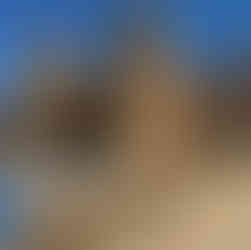

















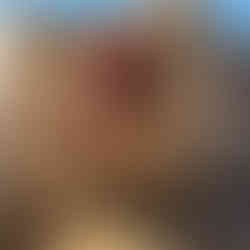





















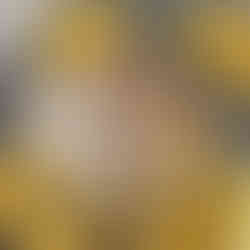




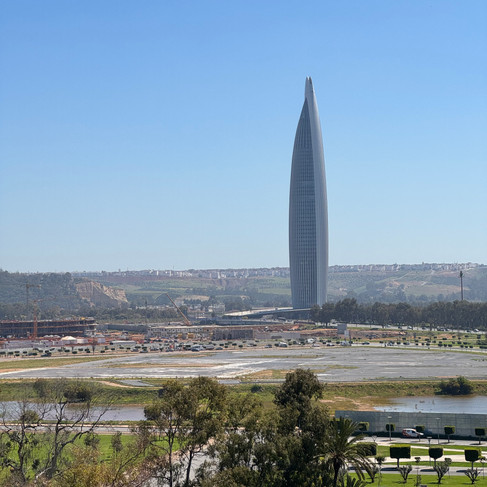
Comments